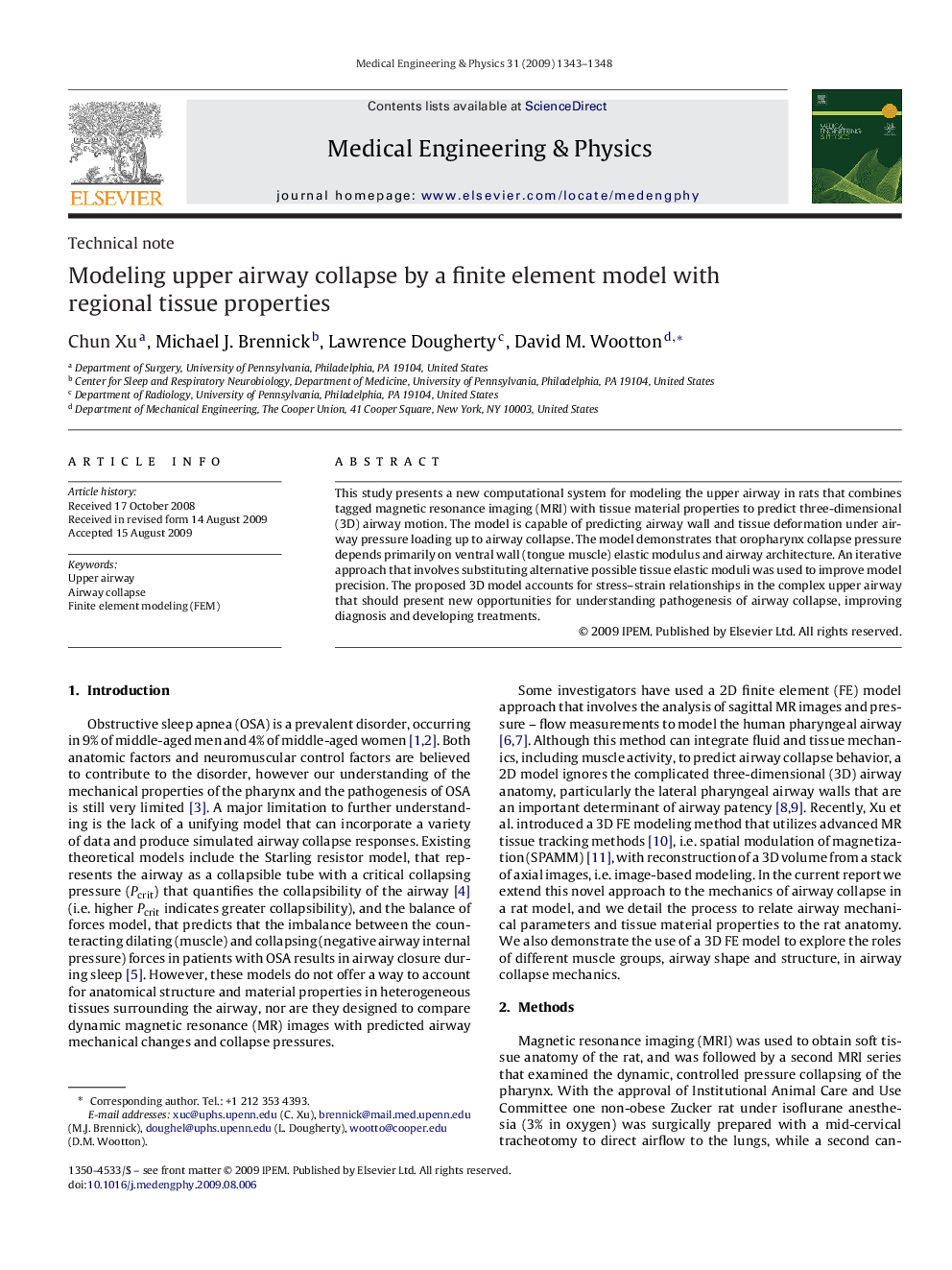| Article ID | Journal | Published Year | Pages | File Type |
|---|---|---|---|---|
| 876837 | Medical Engineering & Physics | 2009 | 6 Pages |
This study presents a new computational system for modeling the upper airway in rats that combines tagged magnetic resonance imaging (MRI) with tissue material properties to predict three-dimensional (3D) airway motion. The model is capable of predicting airway wall and tissue deformation under airway pressure loading up to airway collapse. The model demonstrates that oropharynx collapse pressure depends primarily on ventral wall (tongue muscle) elastic modulus and airway architecture. An iterative approach that involves substituting alternative possible tissue elastic moduli was used to improve model precision. The proposed 3D model accounts for stress–strain relationships in the complex upper airway that should present new opportunities for understanding pathogenesis of airway collapse, improving diagnosis and developing treatments.
